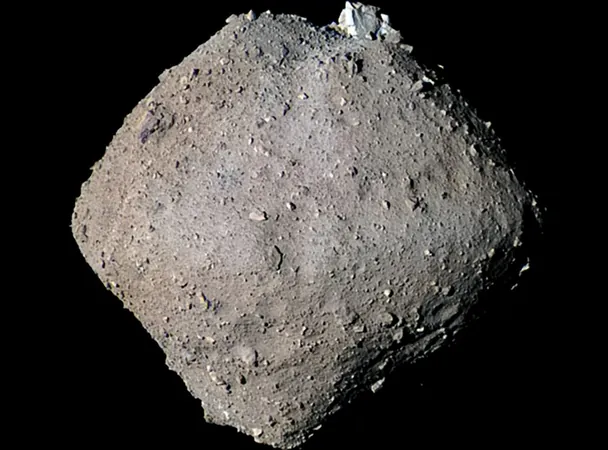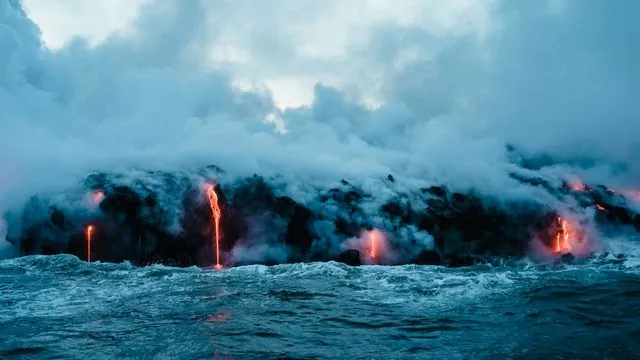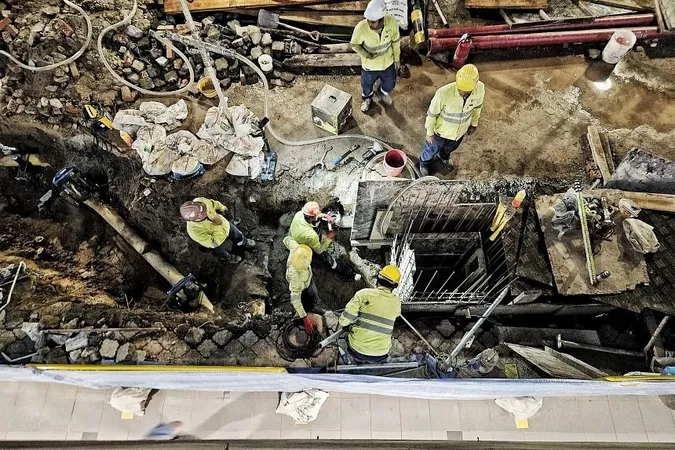
Unearthing Secrets: What Tiny Fragments from a 4-Billion-Year-Old Asteroid Reveal about Our Solar System
2024-10-30
Author: Mei
Introduction
In June 2018, the Japanese Hayabusa 2 spacecraft made history by arriving at asteroid 162173 Ryugu. Over the next 15 months, the mission deployed rovers and a lander to uncover the secrets of this ancient celestial body. In December 2020, Hayabusa 2 successfully returned a sample of Ryugu to Earth, weighing just 5.4 grams (0.19 oz), yet containing some of the oldest and most pristine materials known in our Solar System.
Advanced Technologies in Research
Recent studies have allowed scientists to analyze the minuscule fragments collected from Ryugu using advanced technologies, including Argonne National Laboratory’s Advanced Photon Source (APS). This incredible particle accelerator delivers nearly light-speed photons that produce X-rays essential for various scientific applications, including a special technique called Mössbauer spectroscopy. This innovative method sheds light on the oxidation state of iron within the Ryugu samples, contributing crucial insights into its formation and evolution.
Findings from the Research
The research titled “Formation and evolution of carbonaceous asteroid Ryugu: Direct evidence from returned samples” reveals astounding findings. With Ryugu being a rare Cb-type asteroid—a hybrid of carbonaceous C-type and less common B-type asteroids—scientists expect it to harbor organic chemicals that could be key to understanding the early Solar System's conditions.
Strategic Selection of Ryugu
The Japan Aerospace Exploration Agency (JAXA) strategically selected Ryugu for the Hayabusa 2 mission due to its accessibility as a Near-Earth Asteroid (NEA) and its potential to provide insights into organic material that may date back to the dawn of the Solar System. Ryugu’s relatively small size (approximately 900 meters wide) and slow rotation further facilitated the sampling process.
Significant Questions
The data mined from Ryugu is probing significant questions about the formation of celestial bodies in our Solar System: - When and where did Ryugu’s parent body originate? - What were the initial mineralogical compositions of the gathered materials? - How did these materials transform over time through chemical processes? - How did Ryugu get ejected from its parent asteroid?
Impact Simulations and Spectroscopy
Through a blend of impact simulations and advanced spectroscopy, the researchers have uncovered evidence of carbon dioxide-bearing water inclusions within certain crystals, indicating that Ryugu's parent body formed in the outer regions of the Solar System where low temperatures allowed the accumulation of water ice. Another startling discovery was the presence of pyrrhotite, an iron sulfide not found in similar meteorite fragments, suggesting the parent body was born in a cold, icy environment beyond the snow lines of water and carbon dioxide.
Formation Timeline
The research dated the formation of Ryugu’s parent body to approximately 1.8 to 2.9 million years after the Solar System's inception, positing it formed in icy environments far from the Sun, possibly beyond Jupiter. The porous and fine-grained characteristics of the samples suggest that water ice was initially present and later melted due to radioactive heating. Over about five million years, reactions between water and rock gradually transformed the asteroid’s mineral composition from anhydrous to hydrous forms.
Collisions and Origins
Research also reveals that a catastrophic collision, occurring roughly one billion years ago, shattered the 50-kilometer-diameter parent body, yielding Ryugu as a "rubble pile" asteroid—a collection of debris from the impact rather than a singular piece. Astonishingly, the materials that make up Ryugu originated from varying depths of its parent body.
Conclusion and Future Missions
As a result of these groundbreaking studies, scientists are refining our understanding of the timeline regarding both Ryugu and its parent body, revealing a jigsaw of cosmic events spanning billions of years.
In the meantime, Hayabusa 2 continues its mission, now targeting two additional asteroids. In 2026, it will execute a fast fly-by of the S-type asteroid 98943 Torifune, followed by a rendezvous with the small 30-meter asteroid 1998 KY26 in 2031—promising to further expand our knowledge of the universe.
Stay tuned as we continue to uncover the hidden histories of these ancient travelers, providing vital clues not just about asteroids, but about the very origins of life on Earth itself!



 Brasil (PT)
Brasil (PT)
 Canada (EN)
Canada (EN)
 Chile (ES)
Chile (ES)
 España (ES)
España (ES)
 France (FR)
France (FR)
 Hong Kong (EN)
Hong Kong (EN)
 Italia (IT)
Italia (IT)
 日本 (JA)
日本 (JA)
 Magyarország (HU)
Magyarország (HU)
 Norge (NO)
Norge (NO)
 Polska (PL)
Polska (PL)
 Schweiz (DE)
Schweiz (DE)
 Singapore (EN)
Singapore (EN)
 Sverige (SV)
Sverige (SV)
 Suomi (FI)
Suomi (FI)
 Türkiye (TR)
Türkiye (TR)